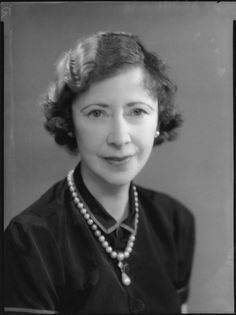Husband
Gerald Wellesley, 7th Duke of Wellington,
Partner Hilda
Matheson
Queer Places:
Penns in the Rocks, Groombridge, Tunbridge Wells TN3 9PA, Regno Unito
 Dorothy
"Dottie" Violet Wellesley, Duchess of Wellington (30 July 1889 – 11 July
1956[1]),
styled Lady Gerald Wellesley between 1914 and 1943, was an English socialite,
author, poet, and literary editor. She was born Dorothy Violet Ashton at White
Waltham. Dorothy Wellesley was the lover of Hilda
Matheson. When Matheson died in 1940, Wellesley placed a plaque at her
home which reads "Amica Amicorum (friend above all others)". In distraught state, she was comforted by
Vita
Sackville-West, who had been Matheson's lover in 1928.
Dorothy
"Dottie" Violet Wellesley, Duchess of Wellington (30 July 1889 – 11 July
1956[1]),
styled Lady Gerald Wellesley between 1914 and 1943, was an English socialite,
author, poet, and literary editor. She was born Dorothy Violet Ashton at White
Waltham. Dorothy Wellesley was the lover of Hilda
Matheson. When Matheson died in 1940, Wellesley placed a plaque at her
home which reads "Amica Amicorum (friend above all others)". In distraught state, she was comforted by
Vita
Sackville-West, who had been Matheson's lover in 1928.
She was the daughter of Col. Robert Ashton of Croughton, Cheshire (himself
a second cousin of the 1st Baron Ashton of Hyde), descended from wealthy
cotton manufacturers, and his wife (Lucy) Cecilia Dunn-Gardner (later Countess
of Scarbrough), and stepdaughter of the 10th Earl of Scarbrough.
As Dorothy Wellesley, the name she took after her marriage to Lord Gerald
Wellesley, she was the author of more than ten books, mostly of poetry, but
including also Sir George Goldie, Founder of Nigeria (1934), and Far
Have I Travelled (1952). She was editor for Hogarth Press of the Hogarth
Living Poets series. She also edited The Annual in 1929.
According to W. B. Yeats, Wellesley was one of the greatest writers of the
twentieth century - see his Introduction to the Oxford Book of Modern Verse
1892-1935. "Within two minutes of our first meeting at my house he said:
‘You must sacrifice everything and everyone to your poetry'".[2]
Yeats discovered her poetry while researching the Oxford Book of Modern
Verse and said "My eyes filled with tears. I read in excitement that was
more delightful because it showed that I had not lost my understanding of
poetry." Only later did he find who she was and what was her station in life.[3]
Yeats scholar R. F. Foster, however, has written that she was "a moderately
accomplished if minor poet" though adding that "the quality of some of her
work has been vindicated by time".[4]
She was introduced to Yeats in 1935, and he eventually would edit and
revise her poems as well as soliciting her comments on his works. Together
they edited the second series of Broadsides: New Irish & English Songs
in 1937.[5]
Yeats spent much of his final time towards the end of his life with Wellesley
at her Sussex home,[6]
and she would be at Yeats's deathbed in 1939.
Dorothy Ashton married Lord Gerald Wellesley (later 7th Duke of
Wellington), on 30 April 1914; they separated in 1922 but did not divorce.
They had two children:
- Valerian Wellesley, 8th Duke of Wellington (2 July 1915 – 31 December
2014)
- Lady Elizabeth Wellesley (born 26 December 1918)
Dorothy Wellesley became the lover of
Vita
Sackville-West, for whom she left her husband and children in 1922,
according to a memoir published in 2009 by her granddaughter, Lady Jane
Wellesley.[7]
After that relationship ended, for eight years she became the lover and
companion of Hilda
Matheson (1888–1940), a BBC producer who lived in "Rocks Farm" in the
grounds of her house in the Sussex village of Withyham[8]
called "Penns-in-the-Rocks". A certain distance was called for due to
Dorothy's (family nickname "Dotty") sometimes erratic and demanding behaviour.
This relationship, a key stabilizer in both their lives, ended tragically with
the death of Hilda during a routine thyroid operation.[9]
The Duchess of Wellington died at Withyham in Sussex. After her death, her
widower proposed to her half-sister Lady Serena James (widow of his former
brother-in-law the Hon. Robert James), but she refused him.[10]
My published books:


BACK TO HOME PAGE

- https://en.wikipedia.org/wiki/Dorothy_Wellesley,_Duchess_of_Wellington
 Dorothy
"Dottie" Violet Wellesley, Duchess of Wellington (30 July 1889 – 11 July
1956[1]),
styled Lady Gerald Wellesley between 1914 and 1943, was an English socialite,
author, poet, and literary editor. She was born Dorothy Violet Ashton at White
Waltham. Dorothy Wellesley was the lover of Hilda
Matheson. When Matheson died in 1940, Wellesley placed a plaque at her
home which reads "Amica Amicorum (friend above all others)". In distraught state, she was comforted by
Vita
Sackville-West, who had been Matheson's lover in 1928.
Dorothy
"Dottie" Violet Wellesley, Duchess of Wellington (30 July 1889 – 11 July
1956[1]),
styled Lady Gerald Wellesley between 1914 and 1943, was an English socialite,
author, poet, and literary editor. She was born Dorothy Violet Ashton at White
Waltham. Dorothy Wellesley was the lover of Hilda
Matheson. When Matheson died in 1940, Wellesley placed a plaque at her
home which reads "Amica Amicorum (friend above all others)". In distraught state, she was comforted by
Vita
Sackville-West, who had been Matheson's lover in 1928.
